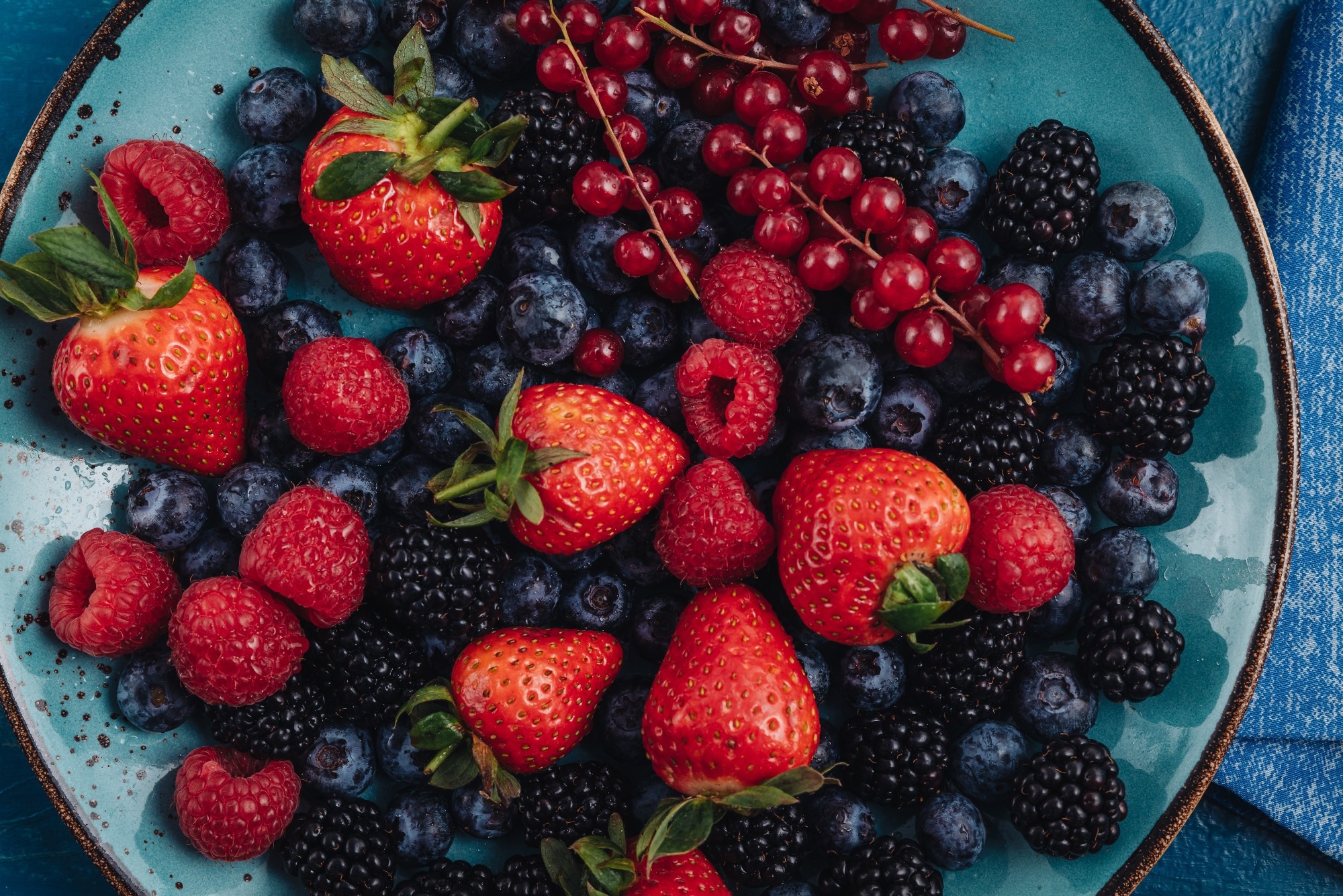A new modeling study finds that replacing a single serving of fruit with berries each day dramatically improves anthocyanin and fiber intake, offering a simple, cost-effective upgrade to American diets.
 Study: Effect of replacing commonly consumed fruit in the United States with berries in the USDA healthy Dietary Patterns: a modeling analysis. Image Credit: Sabino Parente / Shutterstock
Study: Effect of replacing commonly consumed fruit in the United States with berries in the USDA healthy Dietary Patterns: a modeling analysis. Image Credit: Sabino Parente / Shutterstock
In a recent study published in the Annals of Medicine, a group of researchers evaluated the nutritional effects of substituting commonly eaten fruits with berries in the United States Department of Agriculture (USDA) dietary models.
Background
Why do most Americans eat the same fruits every day, like apples, bananas, and grapes, even though a wide variety is available? According to the National Health and Nutrition Examination Survey (NHANES), most adults in the US do not eat fruit every day, and when they do, they often rely on just a few types. This limited variety may reduce exposure to important nutrients and bioactive compounds such as anthocyanins, which are especially rich in berries.
Anthocyanins are associated with cardiovascular benefits and may improve vascular function and metabolic health, although clinical intake recommendations are not yet established. Despite these potential benefits, berries are under-consumed in typical American diets. Further research is needed to understand how incorporating more berries into daily fruit intake can improve overall nutritional quality.
About the Study
The researchers used the USDA food pattern modeling method to explore the nutritional effects of replacing one daily serving of commonly consumed fruit like apple, banana, or grape, with one serving of berries. This substitution was tested in three USDA dietary models: Healthy Mediterranean-Style (HMS), Healthy United States-Style (HUS), and Healthy Vegetarian (HV). Each model was designed for a 2,000-calorie daily intake over a 7-day menu. Each day included two servings of fruit, with the intervention replacing seven of the fourteen weekly servings of common fruits with berries.
Nutrient analysis was conducted using the Elizabeth Stewart Hands and Associates (ESHA) Food Processor software version 11.14.x. The software utilized data from multiple databases, including the USDA FoodData Central and the USDA Database for Flavonoid Content of Selected Foods, Release 3.3. Over a 7-day menu, berry servings included three cups of blueberries and four cups of a mixed blend (blackberries, raspberries, and strawberries), with one cup consumed daily in place of a commonly eaten fruit.
The researchers evaluated changes in energy, macronutrients (protein, fat, carbohydrates), dietary fiber (total and soluble), vitamins, minerals, and anthocyanins. Food cost estimates were derived from Walmart retail prices in Grand Junction, Colorado, which reflected average pricing in the US market.
Study Results
Replacing one daily serving of commonly consumed fruit with one serving of berries led to a 93.8% increase in anthocyanin intake across all three dietary models. This major gain in bioactive compounds was achieved without significant changes in calorie count, fat, protein, or cholesterol, suggesting that the substitution was nutritionally balanced.
In the HUS model, total dietary fiber increased by 5.1% and soluble fiber by 10.1%. Vitamin C rose by 16%, while vitamin E and vitamin K increased by 6.0% and 5.4%, respectively. Sugar intake dropped by 8.1%, and total carbohydrates decreased by 3.1%. Protein and fat values remained nearly the same. The weekly cost of food increased by $7.28, a 10.4% rise compared to the baseline menu. Potassium decreased by 3.3%, while other minerals changed by less than 2%.
The HMS model showed similar trends, with total fiber increasing by 4.7% and soluble fiber rising by 5.3%. Vitamin C increased by 13.9%, vitamin E by 5.3%, and vitamin K by 4.7%. Sugar intake declined by 8.1%, and carbohydrates showed a modest decrease. The weekly cost of food increased by $6.72, marking a 9.2% increase. Potassium decreased slightly by 1.2%, with minimal changes in other minerals.
In the HV model, soluble fiber rose by 10.2%, and total fiber increased by 1%. Vitamin C rose by 11.9%, vitamin E by 5.4%, and vitamin K by 5.1%. Carbohydrate intake dropped by 4.6%, and sugar fell by 9.2%. Potassium decreased slightly by 3.8%, while other minerals showed minimal changes. The cost of food increased by $6.97 per week, a 10.5% rise.
These results suggest that incorporating berries into the USDA dietary patterns enhances nutritional quality without compromising calorie or macronutrient balance. The increase in fiber and key vitamins is particularly relevant, given the widespread deficiency of these nutrients in American diets. The weekly grocery cost increased by about 10%, yet remained within the USDA’s moderate-cost food plan range ($73.90–$87.60 per week for adults aged 19–50 in 2024).
These nutrient gains may justify the added cost, particularly for households aiming to improve diet quality through small, sustainable changes. However, the authors noted that because this was a modeling analysis, the findings may not accurately reflect actual individual food intake.
Conclusions
To summarize, replacing one serving of commonly eaten fruit with a serving of berries in the USDA dietary models led to notable improvements in nutrient density. Anthocyanins, fiber, and key vitamins, including vitamin C, vitamin E, and vitamin K, increased significantly, while calorie and macronutrient levels remained stable.
These benefits were observed in all three USDA dietary patterns. While food costs increased by approximately 10%, they remained comparable to those outlined in the USDA’s moderate-cost weekly food plan.
This modeling analysis suggests that including berries as a daily fruit option may offer nutritional benefits without compromising dietary balance or affordability. Including berry subgroups in future federal dietary recommendations may offer a practical strategy for improving public health nutrition.
Author Disclosure Statement
Kim S. Stote has previously received grant support from the U.S. Highbush Blueberry Council. Leslie Wada is employed by the North American Blueberry Council. Kristi Crowe-White declares no conflicts of interest. The authors affirm that these affiliations did not influence the study design, data analysis, interpretation, or reporting of results.